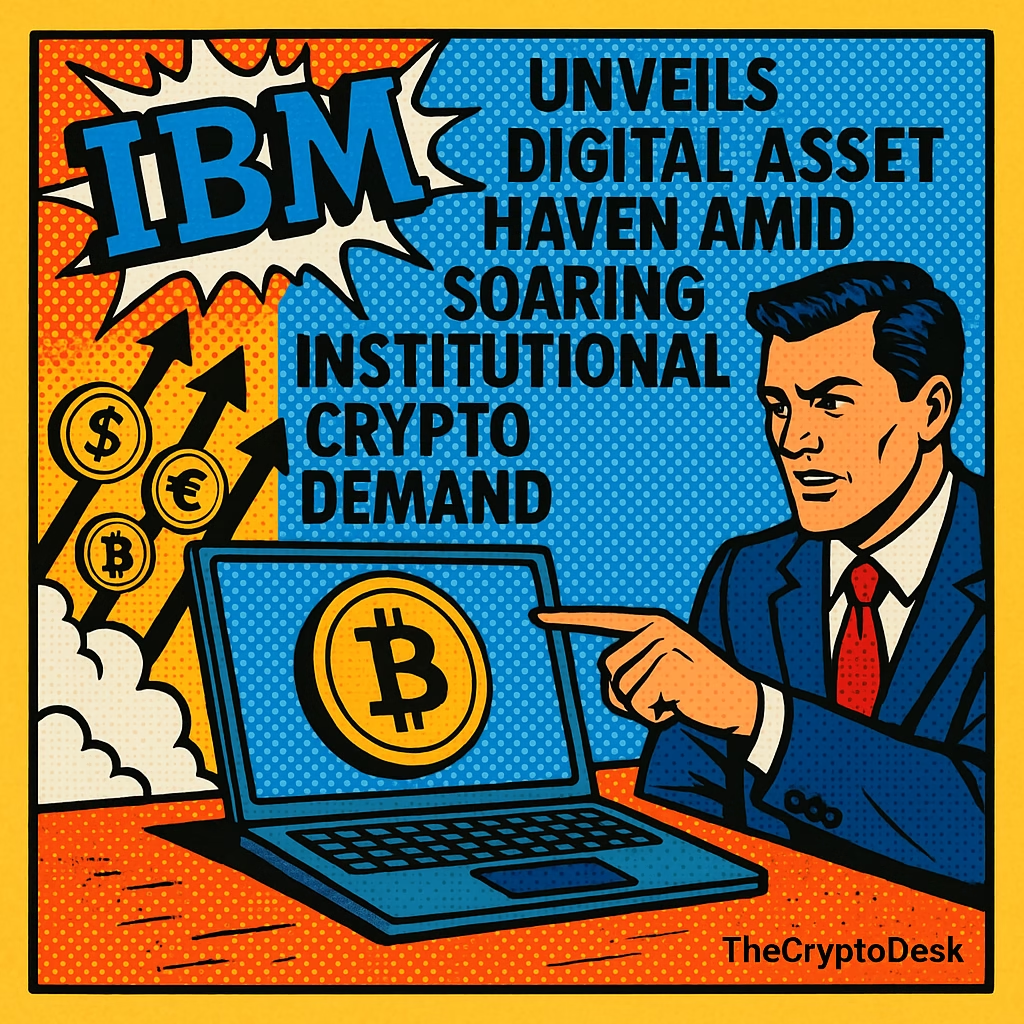In the fast-evolving realm of finance, IBM has just made a significant statement by launching the IBM Digital Asset Haven. This innovative platform is not just another tech offering; it represents a crucial leap for financial institutions, governments, and enterprises looking to navigate the complexities of digital asset management. Imagine a secure, centralized hub where digital assets can be handled with the highest level of compliance and security. That’s exactly what IBM is aiming to deliver.
Meet IBM Digital Asset Haven, built for the next era of finance. It’s a single, secure environment for clients to manage and transact digital assets, empowering institutions to enter this new economy. Learn more: https://t.co/fRvcQhBeV3 pic.twitter.com/Ro0pYfidEO— IBM Hybrid Cloud & Infrastructure (@IBMcloud) October 27, 2025
In collaboration with Dfns, a leader in digital wallet infrastructure, IBM has effectively merged its robust technology with Dfns’ cutting-edge asset management capabilities. Dfns, with a track record of creating over 15 million wallets for more than 250 clients, brings a wealth of experience and security to the table, ensuring that financial operations can evolve seamlessly in this new digital landscape.
But why does this launch matter? As the popularity of tokenized assets and stablecoins spreads across the globe, institutions face the daunting task of adapting to these developments while maintaining robust compliance. With IBM Digital Asset Haven, companies gain access to an array of tools designed to meet the highest regulatory expectations, making the transition to digital asset management smoother and more secure.
“With IBM Digital Asset Haven, our clients have the opportunity to enter and expand into the digital asset space backed by IBM’s level of security and reliability,” stated Tom McPherson, General Manager of IBM Z and LinuxONE. He emphasized that this platform not only offers a secure foundation but also leverages advanced data governance structures that clients have been eagerly seeking.
One of the standout features of the Digital Asset Haven is its Transaction Lifecycle Management system. This groundbreaking aspect automates the entire blockchain journey—from execution to settlement—across an impressive range of over 40 public and private blockchains. This means institutions can operate their digital asset programs with a level of efficiency and oversight that was previously unattainable.
Furthermore, the Governance and Entitlement Management framework allows organizations to customize multi-party authorizations and enforce policies tailored to their operational needs. This adaptability positions IBM’s platform as a frontrunner in setting industry standards.
What about the speed of deployment? IBM has accounted for that too, offering pre-integrated services for critical processes such as Know Your Customer (KYC) and Anti-Money Laundering (AML), along with tools for yield generation. Developers are also catered for with a suite of APIs and SDKs, streamlining the integration process into various existing workflows.
At its core, the IBM Digital Asset Haven is built on an unparalleled security framework. The combination of Multi-Party Computation (MPC), Hardware Security Modules (HSM), and IBM’s Offline Signing Orchestrator (OSO) creates a fortress for compliant cold storage solutions. This robust technology, bolstered by quantum-safe cryptography, ensures institutions are prepared not just for today’s regulations but also for future developments in the regulatory landscape.
Clarisse Hagège, CEO of Dfns, remarked, “Together with IBM, we’ve built a platform that goes beyond custody to orchestrate the full digital asset ecosystem, paving the way for digital assets to move from pilot programs to production at a global scale.” With the anticipation building, IBM Digital Asset Haven is set to launch as a Software as a Service (SaaS) and hybrid SaaS solution in Q4 2025, followed by an on-premises release in Q2 2026. This represents a bold ambition by IBM to transform the digital asset sector into something resembling bank-grade infrastructure.
Looking ahead, IBM’s continued innovations, including its newly unveiled “Lightweight Engine” for WatsonX.ai, showcase its commitment to driving advancements not only for large enterprises but potentially for smaller businesses in dynamic industries like fintech. As we move into this new era of digital finance, the implications of such advancements could be game-changing, setting new benchmarks for security, compliance, and operational efficiency.
As institutions prepare to embrace these new tools, one has to wonder: Are we ready for the revolution in how we think about and manage money in the digital age? If you’re keen to stay informed on the latest in cryptocurrency and technology innovations, keep an eye on developments such as IBM’s move towards the Digital Asset Haven.
